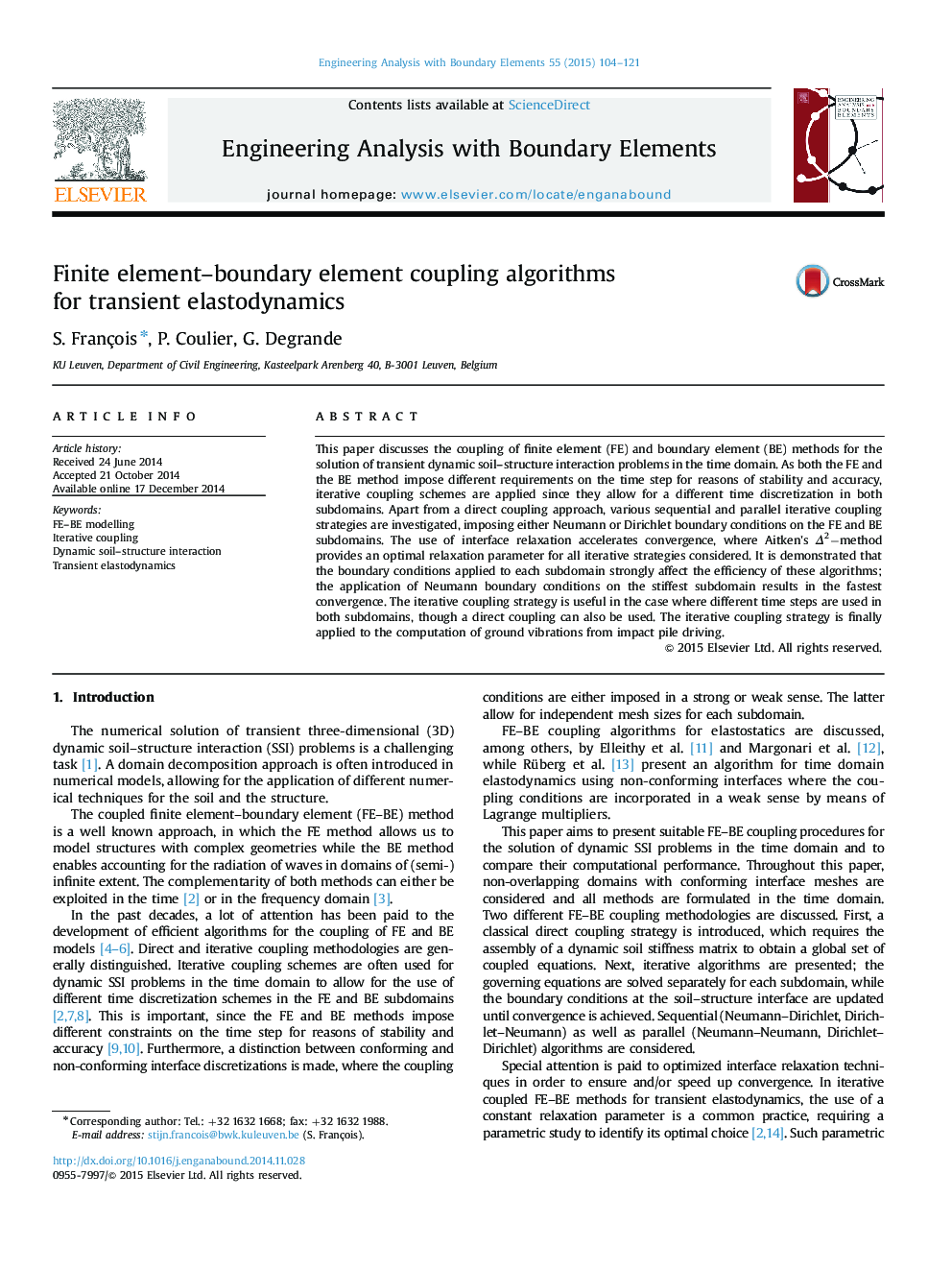| Article ID | Journal | Published Year | Pages | File Type |
|---|---|---|---|---|
| 512477 | Engineering Analysis with Boundary Elements | 2015 | 18 Pages |
This paper discusses the coupling of finite element (FE) and boundary element (BE) methods for the solution of transient dynamic soil–structure interaction problems in the time domain. As both the FE and the BE method impose different requirements on the time step for reasons of stability and accuracy, iterative coupling schemes are applied since they allow for a different time discretization in both subdomains. Apart from a direct coupling approach, various sequential and parallel iterative coupling strategies are investigated, imposing either Neumann or Dirichlet boundary conditions on the FE and BE subdomains. The use of interface relaxation accelerates convergence, where Aitken׳s Δ2-methodΔ2-method provides an optimal relaxation parameter for all iterative strategies considered. It is demonstrated that the boundary conditions applied to each subdomain strongly affect the efficiency of these algorithms; the application of Neumann boundary conditions on the stiffest subdomain results in the fastest convergence. The iterative coupling strategy is useful in the case where different time steps are used in both subdomains, though a direct coupling can also be used. The iterative coupling strategy is finally applied to the computation of ground vibrations from impact pile driving.
